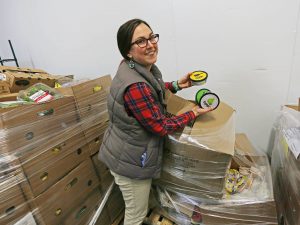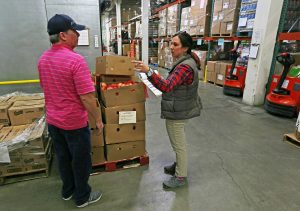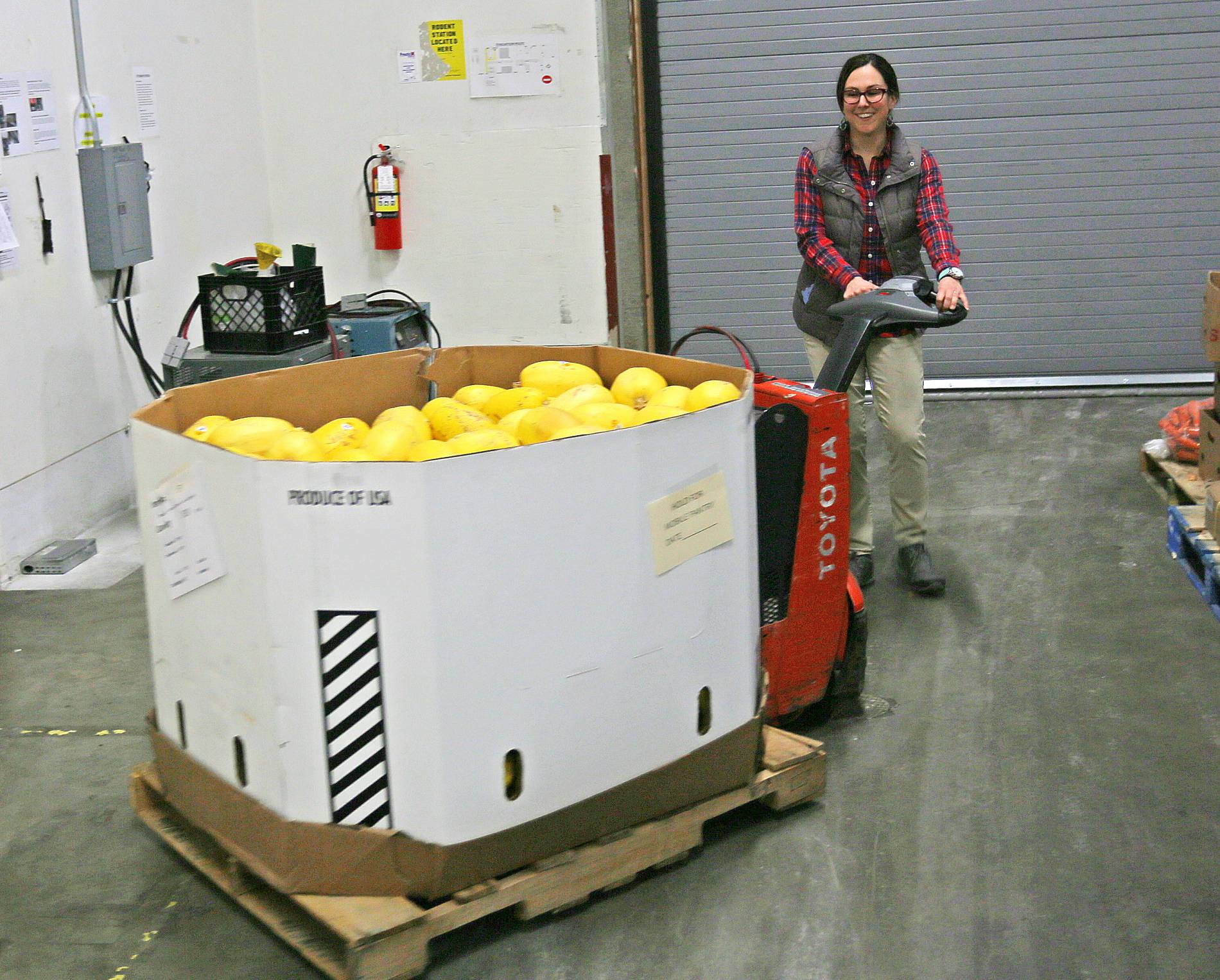Call it the practical side of public health, or public health in action. The point is, those spaghetti squash weren’t going to move themselves.
So, Tara Westenhiser, a 2017 ColoradoSPH at CSU graduate, angled and reangled an electric jack into the pallet beneath the huge cardboard bin of golden squash, deftly navigating the narrow loading bay. She lined it against a wall, alongside other pallets of produce that would be part of the following day’s mobile food pantry. Then, consulting with volunteer Ron Richter, they considered: Where to put the peanuts?
It’s a bit of real-life Tetris, a fair number of spreadsheets, a lot of leadership and organization and a tremendous amount of food, all of it part of Tara’s work as coordinator of Food Bank for Larimer County‘s Mobile Food Pantry. Though there’s a lot of learning on the job, she said she was prepared by her MPH courses in the ColoradoSPH at CSU, and especially by her practicum and capstone projects.
“As part of my capstone (doing a gap analysis of food insecurity in Boulder and Larimer counties), one of my recommendations was more mobile pantries or mobile grocery stores,” she explained. “I feel like I really lucked into this position because it’s such a perfect fit with the work I did for my capstone.”
Now, she’s even working with the ColoradoSPH at CSU to become a practicum preceptor, because in the almost six months she’s been with the Food Bank for Larimer County she’s noted a lot of possibilities for analysis of existing mobile food bank services and research into how they might be expanded.
Working in the field
Because the Food Bank involves so many aspects of public health practice, she said, there are potential areas of research for students in almost every concentration. As an MPH student, her concentration was Animals, People and the Environment with a focus on food systems.
She said she’d b een interested in food security and food systems even before beginning her MPH. After earning an undergraduate degree in history, she worked for AmeriCorps doing conservation work – forest thinning, trail building and ecological restoration.
een interested in food security and food systems even before beginning her MPH. After earning an undergraduate degree in history, she worked for AmeriCorps doing conservation work – forest thinning, trail building and ecological restoration.
“I enjoyed working in the field,” she said, recalling that she eventually made her way to Crescent City, California, where she worked on a CSA (community-supported agriculture) farm in the Fort Dick area.
“At the time it was the only CSA in that area,” she explained. “It was in a rural, low-income area and I just thought it was really cool we could offer fresh, healthy produce to the people in this area.”
After working in Vernal, Utah, tracking invasive cactus species, she realized her interest in food systems by beginning her MPH studies. Since graduating in May and beginning her work with Food Bank for Larimer County, she said her learning curve has been steep but the work is extremely rewarding.
“Our pantry’s really cool,” she said. “We set it up market-style, so our guests can walk along and choose what they want. The majority of food we bring is produce and we tell our guests take what you need, take what you want.
“One of the things I really like is I get to be face-to-face with guests and I’m really humbled by how even if they’re struggling, they’re still really grateful. I really believe that we can make a difference in lowering the rate of food insecurity in this area.”
The Food Bank for Larimer County Mobile Food Bank operates on weekends at four locations throughout the area, including the CSU campus, “and it’s interesting, because maybe it’s something that we don’t want to think about, that it’s not happening in our own backyard,” she said. “But last time 630 people came to the CSU pantry.”
Her goal for her work, she said, is to continue to draw from her MPH studies to see less food waste and less food insecurity, and ultimately to do her part to ensure that people have enough to eat.

